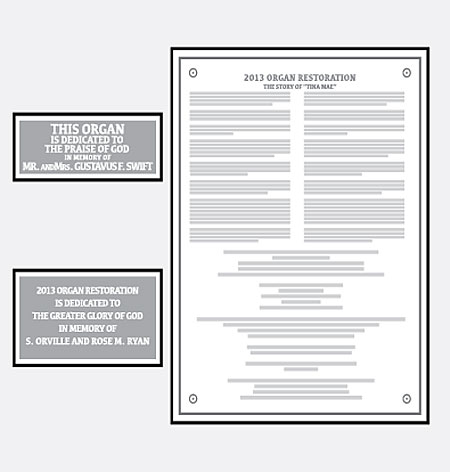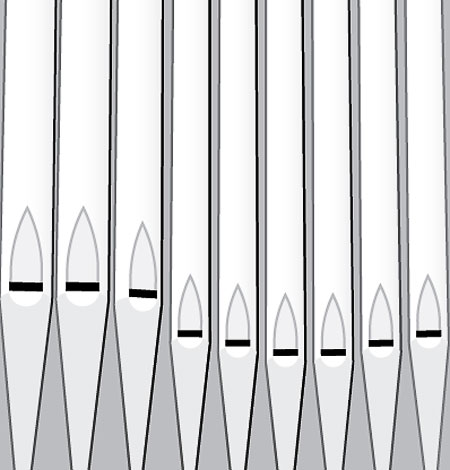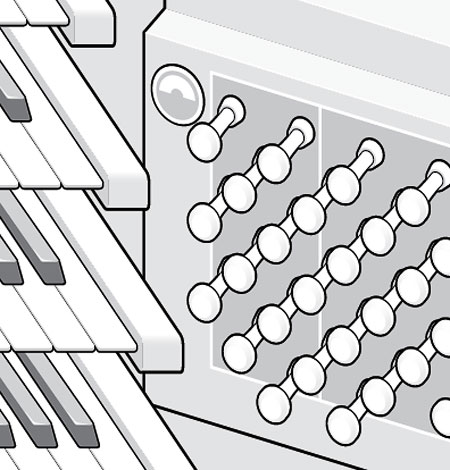Take a Walk on the Noir Side
A creepy trip through the Art Institute’s strangest (and often overlooked) curiosities
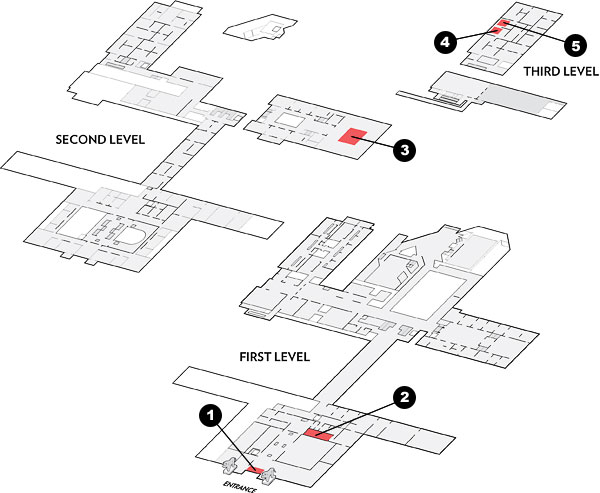
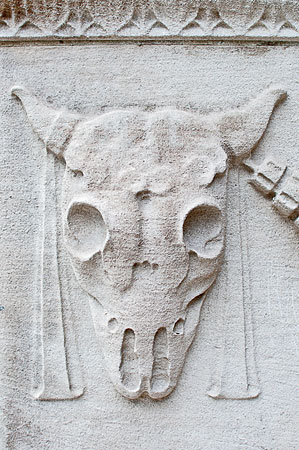
1. Between the lions on Michigan Avenue, you’ll find another animal lurking: a cow—or, rather, its skull. In fact, 28 carved craniums grace the stone planters on the front steps, a nod to the city’s slaughterhouse days.
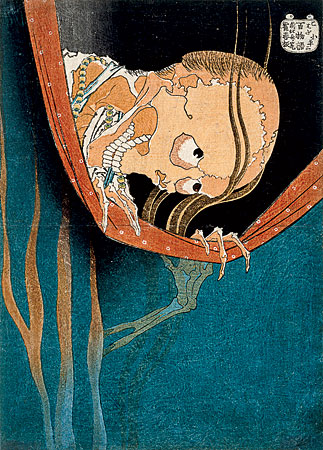
2. The exhibit Ghosts and Demons in Japanese Prints includes a nearly 200-year-old print by Katsushika Hokusai that tells the story of a murdered husband back from the dead to take his revenge.
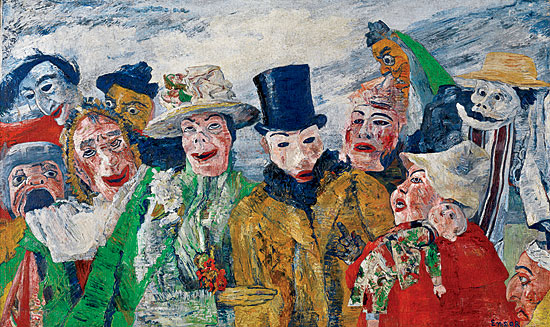
3. To understand the struggles of the Belgian painter James Ensor (who is the subject of the museum’s current blockbuster show, Temptation: The Demons of James Ensor), look no further than his 1890 painting The Intrigue, a disturbing image of a masked crowd.
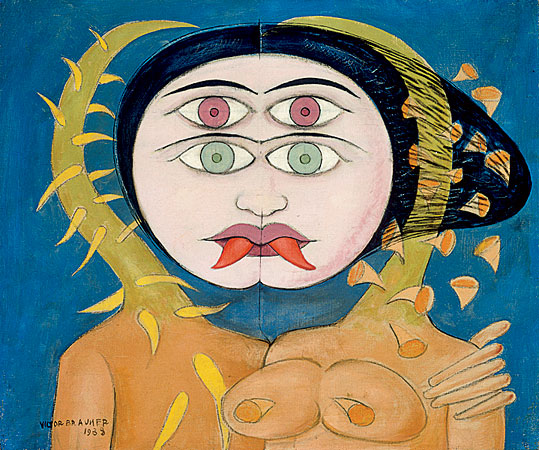
4. The Romanian surrealist Victor Brauner delighted in all flavors of the bizarre. Case in point: His disorienting 1938 work Gemini reimagines the zodiac sign as a single head attached to two bodies, male and female, each with its own tongue and eyes.
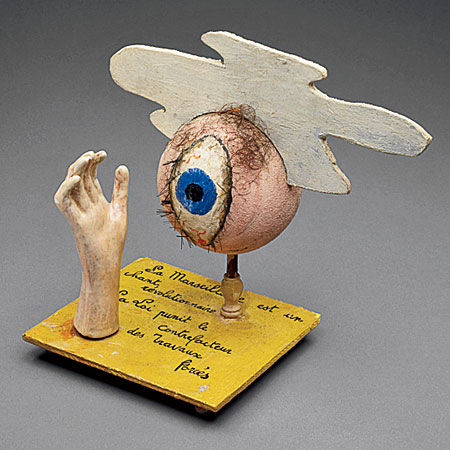
5. Claude Cahun, one of the few female surrealists, was an ardent feminist famous for her gender-bending portraits. However, her 1936 sculpture titled Object is made from wood and hair and meant to suggest female genitalia.
Cozy Up with a Book
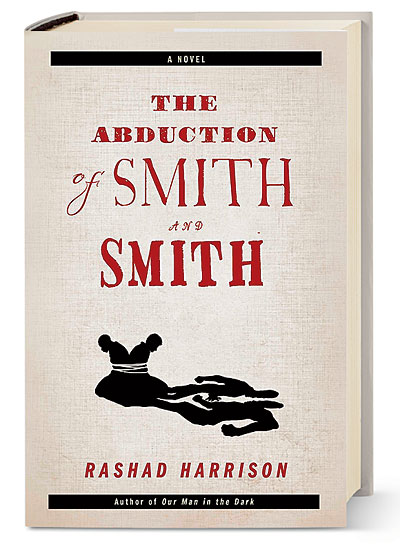
The Abduction of Smith and Smith
by Rashad Harrison
Former slave Jupiter Smith tries to elude the son of his old master—whom he killed—in this historical thriller set after the Civil War. Simon & Schuster, January 6
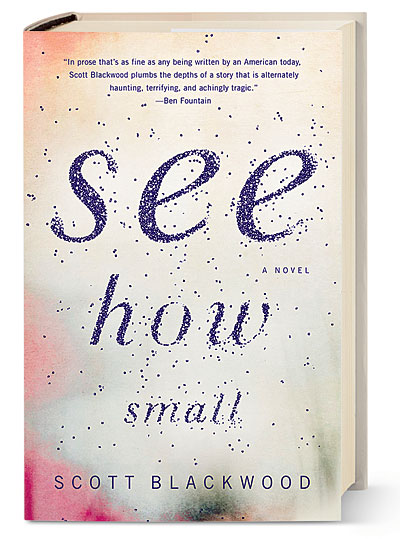
See How Small
by Scott Blackwood
A small Texas town reels in the aftermath of a horrific crime in the emotionally layered new novel from the Whiting Writers’ Award recipient. Little, Brown, January 20
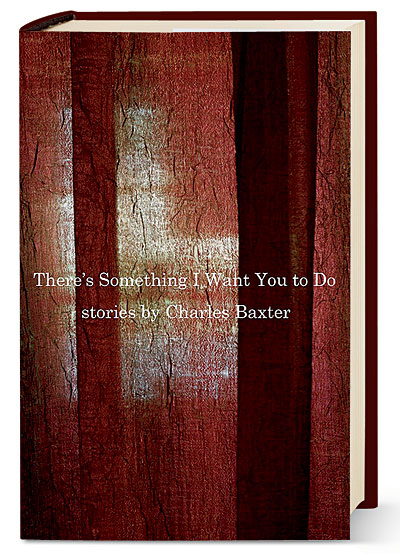
There’s Something I Want You to Do
by Charles Baxter
A luminary of Midwestern fiction—and a master at plumbing depths beneath the everyday—releases his first new story collection in 15 years. Pantheon, February 3
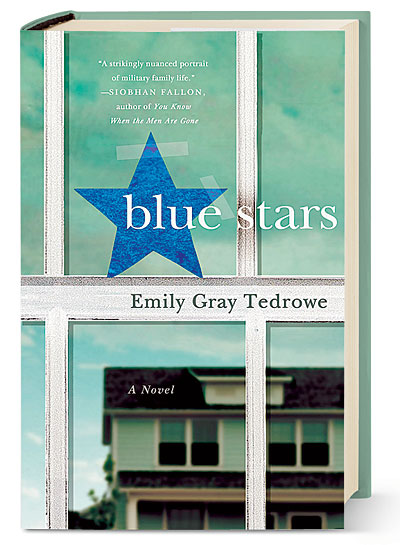
Blue Stars
by Emily Gray Tedrowe
In this lyrical sophomore outing from the Chicago novelist, two women learn together what it means to have family members at war. St. Martin’s Press, February 17
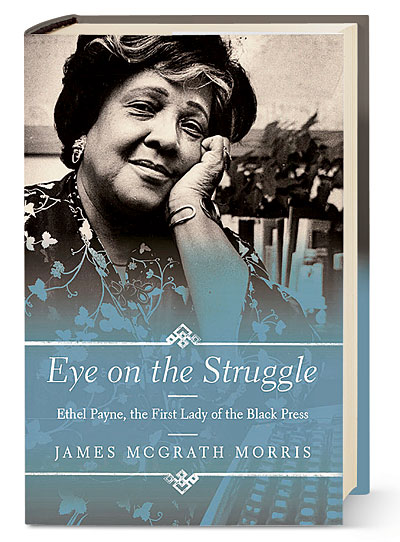
Eye on the Struggle: Ethel Payne, the First Lady of the Black Press
by James McGrath Morris
South Side native, civil rights activist, and Chicago Defender correspondent Ethel Payne gets her due. Amistad, February 17
Stare at a Painting
Ann Toebbe’s artworks, made with cut paper and paint, depict the childhood bedrooms of her friends and family. One piece, Four Sisters, reimagines the Veracruz, Mexico, bedroom of Hortencia, the longtime nanny for the Toebbes. “I don’t like well-designed homes, the kind you see in Architectural Digest,” says Toebbe. “I like the quirkiness, the accumulation of the past colliding with the present.” Four Sisters is part of the exhibit Division of Labor: Chicago Artist Parents, on view at Glass Curtain Gallery (1104 S. Wabash Ave.) through February 14.
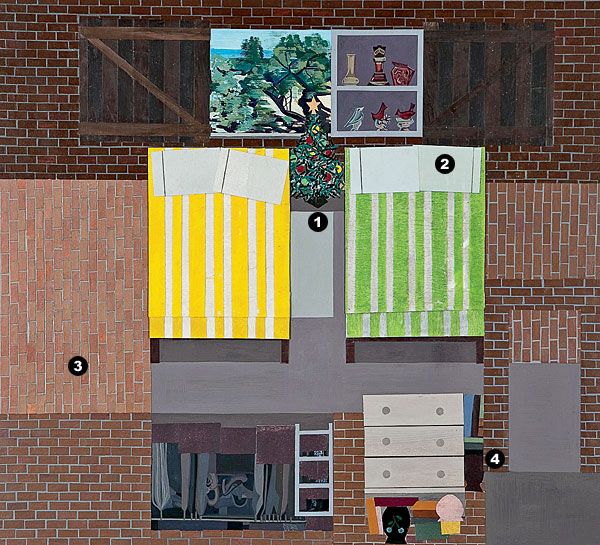
1. Hortencia had a small, cheap Christmas tree as a decoration in her tiny room.
2. Hortencia and her sisters slept two to a bed, back to back.
3. The house’s masonry was “a mess,” says Toebbe, who depicted bricks with bits of cut paper.
4. Toebbe flattened the perspective to evoke a child’s dollhouse. “We all relate to wanting to re-create our life through play.”
Tour a Pipe Organ
Every pipe organ is unique, and each has its own quirks—but most people don’t know much about them. Father Scott Haynes will give you a look at the guts of the massive one at St. John Cantius Church (825 N. Carpenter St.) on December 13. You’ll discover the following:
